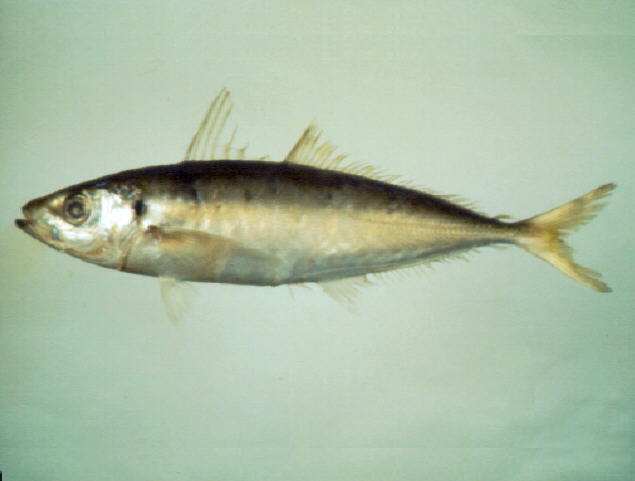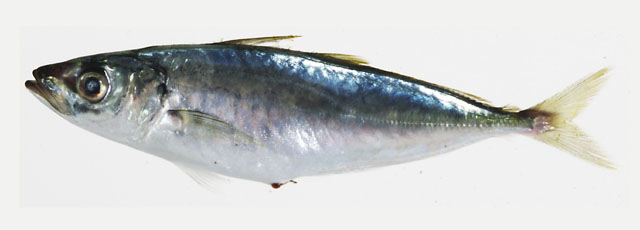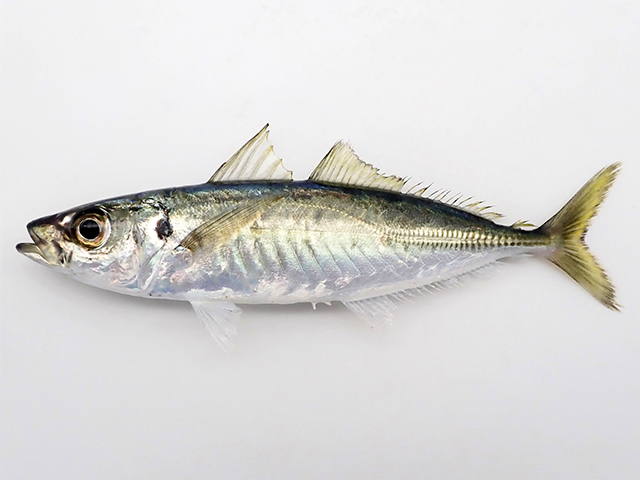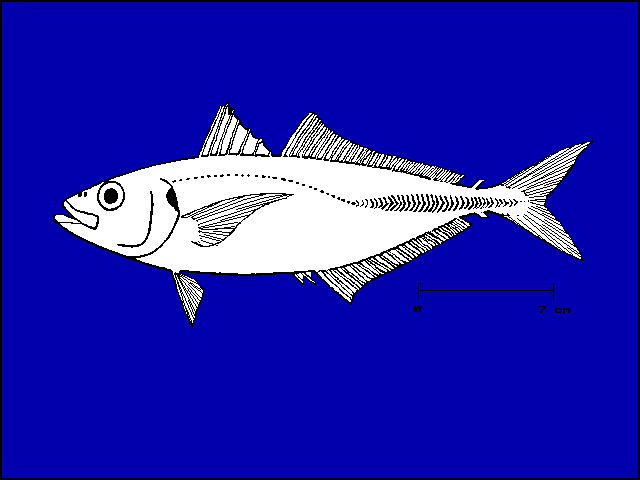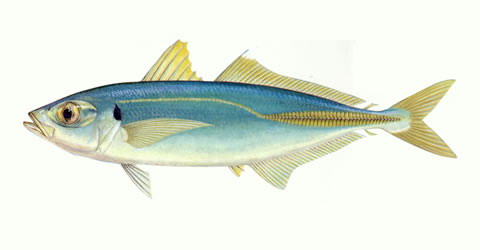Decapterus
maruadsi
(Temminck &
Schlegel,
1843)
Japanese scad
View all media / Upload your photos and videos
Expand all
Classification / Names
Teleostei (teleosts) > Carangiformes (Jacks) >
Carangidae (Jacks and pompanos)
> Caranginae
Etymology: Decapterus: Greek, deka = ten + Greek, pteron = wing, fin (Ref. 45335).
More on authors:
Temminck &
Schlegel.
Environment / milieu / depth range / climate zone / distribution range
Distribution
Indo-West Pacific: South China Sea to the Mariana Islands. Reported occurrence in southern Africa could not be confirmed (Ref. 3197).
Maps

Decapterus maruadsi / Native range
AquaMaps Data sources:
GBIF
OBIS
This map was computer-generated and has not yet been reviewed.

Decapterus maruadsi / Suitable habitat
AquaMaps Data sources:
GBIF
OBIS
This map was computer-generated and has not yet been reviewed.

Decapterus maruadsi / Point map
AquaMaps Data sources:
GBIF
OBIS
This map was computer-generated and has not yet been reviewed.

Decapterus maruadsi / Year 2050
AquaMaps Data sources:
GBIF
OBIS
This map was computer-generated and has not yet been reviewed.
Length at first maturity / Size / Weight / Age
Short description
Biology
Adults are found in the sublittoral zone and may enter semi-enclosed sea areas (Ref. 11230). In Guam, it is encountered in large numbers around fish aggregating devices, buoys anchored offshore to attract pelagic game fishes.
Main reference
Myers, R.F. 1991 Micronesian reef fishes. Second Ed. Coral Graphics, Barrigada, Guam. 298 p. (Ref. 1602)
IUCN Red List Status (Ref. 125652)
Least Concern (LC); date assessed: July 19 2017
CITES (Ref. 131153)
Not Evaluated
CMS (Ref. 116361)
Not Evaluated
Threat to humans
Harmless
More information
- Countries
- FAO areas
- Ecosystems
- Occurrences
- Introductions
- Stocks
- Ecology
- Diet
- Food items
- Food consumption
- Ration
- Common names
- Synonyms
- Metabolism
- Predators
- Ecotoxicology
- Reproduction
- Maturity
- Spawning
- Spawning aggregation
- Fecundity
- Eggs
- Egg development
- Age/Size
- Growth
- Length-weight
- Length-length
- Length-frequencies
- Morphometrics
- Morphology
- Larvae
- Larval dynamics
- Recruitment
- Abundance
- References
- Aquaculture
- Aquaculture profile
- Strains
- Genetics
- Allele frequencies
- Heritability
- Diseases
- Processing
- Mass conversion
- Vision
- Pictures
- Stamps, Coins Misc.
- Sounds
- Ciguatera
- Speed
- Swim. type
- Gill area
- Otoliths
- Brains
Estimates based on models
Preferred temperature (Ref. 123201): 22.7 - 29, mean 28 °C (based on 892 cells).
Phylogenetic diversity index (Ref. 82804): PD50 = 0.501 [Uniqueness, from 0.5 = low to 2.0 = high].
Bayesian length-weight: a=0.01230 (0.01046 - 0.01447), b=2.97 (2.94 - 3.00), in cm total length, based on LWR estimates for this species (Ref. 93245).
Trophic level (Ref. 69278): 3.4 ±0.5 se; Based on food items.
Generation time: 1.2 (1.0 - 1.4) years. Estimated as median ln(3)/K based on 24 growth studies.
Resilience (Ref. 120179): High, minimum population doubling time less than 15 months (K=0.5-1.3; tmax=9).
Fishing vulnerability (Ref. 59153): Low vulnerability (23 of 100).
Climate vulnerability (Ref. 125649): Moderate vulnerability (38 of 100).
Price category (Ref. 80766): Very high; Reliable: based on ex-vessel price for this species.
Nutrients (Ref. 124155): Calcium = 300 [102, 710] mg/100g; Iron = 3.11 [1.18, 6.59] mg/100g; Protein = 20.4 [19.1, 21.7] %; Omega3 = 0.234 [0.122, 0.435] g/100g; Selenium = 84.3 [30.9, 199.6] μg/100g; VitaminA = 41.6 [13.6, 143.1] μg/100g; Zinc = 1.4 [0.8, 2.2] mg/100g (wet weight);

